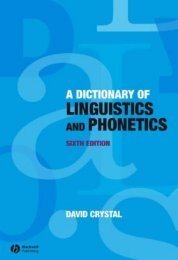url?sa=t&source=web&cd=3&ved=0CC0QFjAC&url=http://www.teachingenglish.org.uk/sites/teacheng/files/B369-Young-Learners-Activity-Book_v10
url?sa=t&source=web&cd=3&ved=0CC0QFjAC&url=http://www.teachingenglish.org.uk/sites/teacheng/files/B369-Young-Learners-Activity-Book_v10
url?sa=t&source=web&cd=3&ved=0CC0QFjAC&url=http://www.teachingenglish.org.uk/sites/teacheng/files/B369-Young-Learners-Activity-Book_v10
You also want an ePaper? Increase the reach of your titles
YUMPU automatically turns print PDFs into web optimized ePapers that Google loves.
TeachingEnglish <strong>Young</strong> <strong>Learners</strong> <strong>Activity</strong> <strong>Book</strong><br />
Introduction<br />
Finding activities<br />
The activities are simply presented in<br />
alphabetical order. We have also developed<br />
a table which you can use to find activities<br />
quickly. The table gives the list of activities and<br />
then some useful information about them, for<br />
example, if they are suitable for large classes or if<br />
resources are required (other than a board, board<br />
pen/chalk, paper and pencils/pens, which we<br />
believe are readily available in most classrooms).<br />
However, these are only guidelines and you<br />
might find that an activity we recommend for<br />
very young learners (4–6/7) is suitable in your<br />
context for junior learners (7–11) or even older<br />
learners (12+). Timings, as we say above, are very<br />
approximate. In the table we indicate if they are<br />
generally short (5–20 minutes), medium length<br />
(20–40 minutes) or long (over 40 minutes).<br />
Again, please use your own judgement to<br />
decide how long activities will take.<br />
Some considerations when using<br />
the activities<br />
Language in the young learner classroom<br />
For many children, their only source of<br />
exposure to English will be you, the teacher.<br />
For this reason, it is advisable to take all<br />
possible opportunities to speak English in the<br />
classroom. However, this does not mean that<br />
your English has to be perfect or that you have<br />
to speak English all the time. Indeed, switching<br />
between different languages is common in<br />
many everyday contexts for many people, and<br />
the classroom is no different in this regard. In<br />
this book, we have suggested where using the<br />
children’s first language might be effective, but<br />
this does not mean you should avoid it at other<br />
times. You are the best judge of how to support<br />
your children’s learning in the classroom.<br />
There are lots of different ways that you can<br />
use English, however. You can use English to<br />
<strong>org</strong>anise the activities in this book, to control<br />
the class while they do them and to talk to the<br />
children on a one-to-one basis. Many of the<br />
activities in the book have steps that involve<br />
the children in quiet tasks, such as cutting<br />
and pasting, drawing, colouring and so on,<br />
that do not explicitly practise new structures<br />
or vocabulary. While children are engaged in<br />
these, you can chat to them more informally.<br />
It is not necessary to use complex language;<br />
simple, encouraging comments are effective<br />
and might include things like, ‘Cut the shapes<br />
carefully. You can use all the colours you want.<br />
How are you getting on? Have you nearly<br />
finished? What colour are you going to use<br />
next?’ and so on. Slattery and Willis (2001) is<br />
an excellent source of English expressions to<br />
use in the primary classroom.<br />
But what about the children’s language use?<br />
We cannot expect children to use English all<br />
the time. It is not only unnatural; it can also<br />
damage children’s confidence. Of course,<br />
children can be encouraged to use English in<br />
whole class activities and also while working<br />
with their peers in pairs and groups. However,<br />
if children use their first language in these<br />
activities, it should not be seen as a problem,<br />
particularly if the input is in English or some<br />
part of the output requires children to use<br />
English. At some stage of the activity, children<br />
will be involved with English, and this is what<br />
is important for young learners.<br />
Teachers play a critical role in creating an<br />
environment in which children feel happy trying<br />
out their English skills. As well as encouraging<br />
children and praising their efforts, teachers need<br />
to have confidence in their own English speaking<br />
skills, whatever their level. If children see their<br />
teachers speaking English with enjoyment and<br />
enthusiasm, not worrying about making mistakes<br />
or knowing every word, then they have a very<br />
positive model for using English themselves. We<br />
hope the activities in this book play their part in<br />
providing the kind of fun and engaging activities<br />
that can motivate children to use English in class.<br />
4<br />
© British Council 2012





